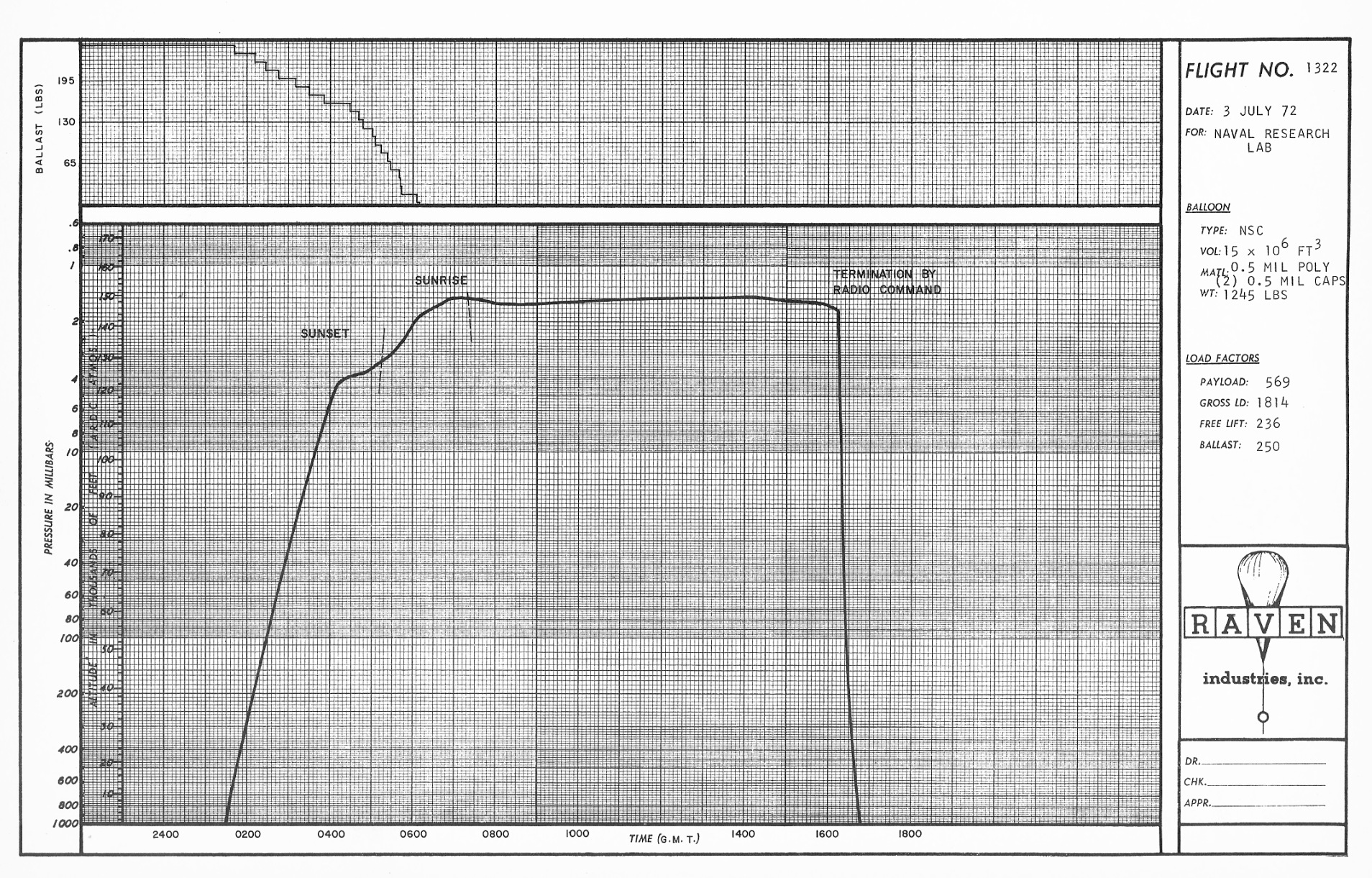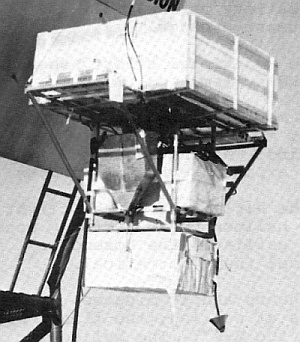Purpose of the flight and payload description
The experiment developed by the Laboratory for Cosmic Ray Physics of the U.S. Naval Research Laboratory (NRL) consisted of four emulsion stacks arranged on a flat platform. Each stack was mounts on a pivot which allowed the stacks to be rotate 180 inches after the balloon reached float altitude. The rotation was performed by command from the ground and served to distinguish in the post-flight analysis those particles received during the floating period from those recorded during ascent.
In addition to the NRL experiment, two other fixed plastic stacks (that were not rotated) were provided by the Air Force Cambridge Research Lab. (AFCRL). At left we can see an image of the payload just before launch (click to enlarge).
Balloon control instrumentation included the Raven TRACR package which provided telemetry data, command channels for termination, ballast, experiment, rotation, and ranging. In addition to the standard control instrumentation, a new transmitter was flown for evaluation.
Details of the balloon flight

Balloon launched on: 7/3/1972 at 1:23 utc
Launch site: Fort Churchill Airport, Manitoba, Canada
Balloon launched by: Raven Industries Inc.
Balloon manufacturer/size/composition: Zero Pressure Balloon Winzen Stratofilm 15.000.000 cuft - Natural Shape (0.5 mils) - 2 Caps (0.5 Mils.)
Balloon serial number: SF 334.85-050-NSC-03 SN: 30
Flight identification number: Raven Nº 1322
End of flight (L for landing time, W for last contact, otherwise termination time): 7/3/1972 at 16:50 utc (L)
Balloon flight duration (F: time at float only, otherwise total flight time in d:days / h:hours or m:minutes - ): 15 h 27 m
Landing site: Near Athabaska river, S of Embarras, Alberta, Canada
Campaign: SKYHOOK 72
Payload weight: 569 lbs
The balloon was launched by dynamic method at 01:23 utc on July 3, 1972 from the airstrip in Fort Churchill airport. Launch was performed in a smooth manner with the launch truck moving approximately fifty feet during a seven knot wind. Ascent began at 850 fpm to ceiling. Ballast was expended every 15 minutes. The balloon floated low during the early part of the flight, however, as the sun came up, the balloon began a steady ascent until it reached its theoretical ceiling. The Rosemount transducer indicated a higher level than theoretical. After a total flight time of 15 hours and 17 minutes, of which 9 hours and 11 minutes were at ceiling, the flight was terminated by radio command from a C-47 plane. The helicopter and Cessna 206 performed the recovery after which the gondola was returned to Embarras for transfer to Churchill aboard the C-47 less than 28 hours after launch.
External references
- Flight Summary of balloons made of Stratofilm - 1971 to 1972, Technical report, Winzen Research International. Circa 1973 - Stratocat's private collection
3580If you consider this website interesting or useful, you can help me to keep it up and running with a small donation to cover the operational costs. Just the equivalent of the price of a cup of coffee helps a lot.


